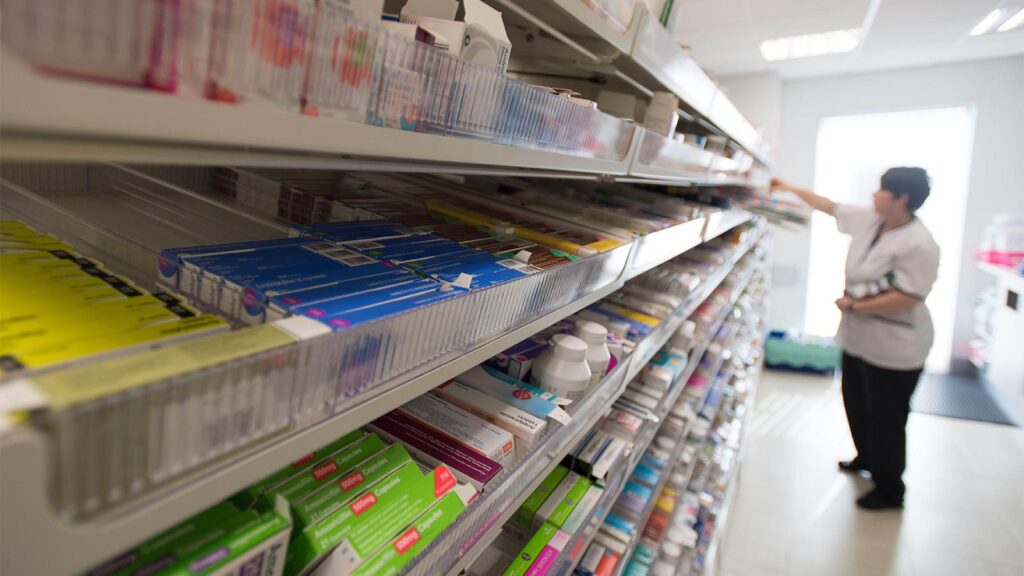Goldstein is a pharmacist.
Community pharmacies are facing an existential crisis. According to the National Community Pharmacists Association, there are 2,200 fewer retail pharmacies in the country than there were in 2020. Walgreens, CVS, and Rite Aid have all announced closures. Many pharmacists are pushing to unionize as they struggle to protect patient health in challenging work environments.
A recent MedPage Today Perspectives piece criticized community retail pharmacies for being “transactional” and not attending to patients’ needs. And media attention more broadly over the last year or so has highlighted issues with pharmacies, from medication access delays to dosing errors. But this coverage often fails to tell the whole story. Much of the problem is out of the hands of community pharmacies; there are much larger systemic issues that trickle down and complicate the work we do. I’d like to clarify the record.
Community Pharmacists Are Hard at Work
In my many roles over a 40-year career in community pharmacy, I can share hundreds of examples of pharmacists and pharmacy technicians going above and beyond to assist patients. Community pharmacists are setting up weekly pill boxes for patient compliance, spotting drug interactions, and avoiding possible dangerous situations. Community pharmacists are consulting with prescribers to get prior authorizations, or notifying them on formulary medications and cheaper alternatives.
Community pharmacists are guiding the selection of proper over-the-counter products. I often think of the time when a father who spoke only Spanish needed acetaminophen suppositories for his young son who was sick with a fever. He had mistakenly picked up laxative suppositories after checking with a stock person instead of a pharmacist; I was able to make sure he got the right medication. At other times, I showed young parents how to use a nebulizer for their child. The list goes on.
Meanwhile, reports of long waits and limited access get all the attention. Rather than blaming the community pharmacies or pharmacists, we should be asking why this is happening.
Systemic Issues Abound
The problems with community pharmacies are often related to reimbursement, or lack thereof, by pharmacy benefit managers (PBMs). Low-cost reimbursement, which used to be an anomaly, is now commonplace. Losing anywhere from $5 to over $100 on a single prescription has become the norm in my experience, and is unsustainable.
While certain medications may be inexpensive, the cost of supplies, overhead, and labor far outweigh the meager reimbursement to the pharmacy. I believe that reimbursing the pharmacy with a mandatory dispensing fee, plus a percentage above the drug cost, is a good starting point to bring a modicum of fairness to the pharmacy-PBM relationship.
Another funding issue stems from the fact that community pharmacies are often unable to participate in many of the discount programs that pharmacies connected to major hospital organizations can access. Hospitals often get more discounts on their drug purchases, which lends to a more sustainable business model. This may allow them to afford higher staffing levels, carry more inventory, and perhaps even offer home delivery to patients. Participation in 340B programs also adds to their profitability.
Meanwhile, community pharmacies may not have the budgets to hire enough staff members to meet demand, which can lead to medication errors, long-lines for patients, and burnout for pharmacists.
Formularies — a list of preferred drugs created by PBMs based on factors such as safety, efficacy, cost, market availability, and rebates — are not beneficial to the patient, the employer who pays for the insurance, or the pharmacy. We have all read about less expensive generic drugs not being on formulary, while the costlier brand is. In fact, I had a recent situation where my patient needed a budesonide/formoterol (Symbicort) inhaler but they had not reached their deductible. The PBM would only pay for the brand, with a co-pay of $375 for the patient. Meanwhile, a generic version would have been $150 less. This was certainly not in the patient’s best interest.
PBMs reap huge profits through a system designed to benefit the bottom line — at the expense of patients. The current system must change.
Efforts Toward Reform
Some states and federal government bodies are examining options to change the system. For example, New York Governor Kathy Hochul (D) estimated that the removal of the Medicaid pharmacy benefit from managed care would save the state approximately $410 million per year. She proposed that those savings could be reinvested into New York’s non-profit providers. At the federal level, the recent PBM report and lawsuit against the three largest PBMs from the Federal Trade Commission are encouraging, and offer hope for reforming PBM oversight and management in a meaningful way.
Lastly, drug manufacturers must also do their part to lower prices and make drugs more affordable. Government policies should not be the only force driving them to cap prices.
The current drug pricing system has cost consumers countless dollars over the years. If we lose our community pharmacies, we will lose an important resource that should always be available to consumers. We will lose valuable contributors to our communities.
Pharmacies can strive to elevate their level of care to even higher levels. However, they need to be adequately compensated to afford inventory and staffing. A fair, fixed-fee reimbursement standard is a logical starting point. Rather than shaming community pharmacies, let’s give them the support they need.
Peter Goldstein, RPh, is a pharmacist with extensive experience in both community pharmacy and clinical settings. He previously served as an experiential education field coordinator at Long Island University.
Please enable JavaScript to view the

